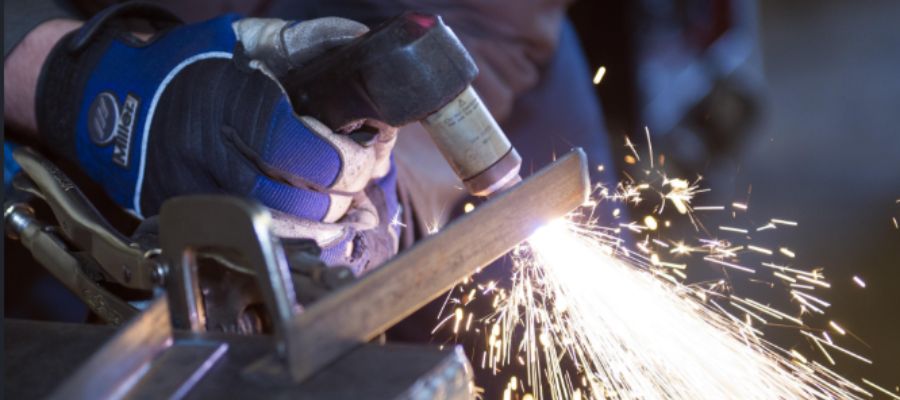In the world of metalworking and fabrication, precision and efficiency are paramount. One tool that stands out for its ability to achieve both is the plasma cutter. This powerful device has revolutionized the way metals are cut, allowing for intricate designs and quick production times. But what exactly is a plasma cutter, and how does it work? In this comprehensive blog, we’ll delve into the workings, applications, and advantages of plasma cutters.

How Plasma Cutters Work
The Basics
At its core, a plasma cutter utilizes electrically conductive gas to transfer energy from a power supply to any conductive material, resulting in a cleaner, faster cutting process. Here’s a step-by-step breakdown of how it works:
- Ionization of Gas: The plasma cutter uses an inert gas (such as compressed air) which is blown through a nozzle at high speed toward the workpiece. An electric arc is introduced to the gas, causing it to ionize and form plasma.
- Plasma Jet Formation: The ionized gas reaches temperatures of up to 30,000°F (16,649°C), creating a plasma jet that can easily melt through metal. This jet is directed out of the nozzle and onto the material being cut.
- Cutting Process: As the plasma jet makes contact with the metal, it melts the material. The high-velocity jet blows the molten metal away, creating a precise cut.
Components of a Plasma Cutter
- Power Supply: Provides the necessary energy to generate the plasma arc.
- Arc Starting Console: Creates a spark to ionize the gas and start the plasma arc.
- Torch: Directs the plasma arc to the workpiece.
- Electrode and Nozzle: Critical components within the torch that focus and direct the plasma jet.
- Gas Supply: Supplies the inert gas necessary for plasma formation.
Applications of Plasma Cutters
Plasma cutters are incredibly versatile and are used in a variety of industries, including:
- Manufacturing: Ideal for cutting sheet metal, pipes, and other metal components quickly and accurately.
- Automotive Repair and Customization: Used for cutting and shaping metal parts and custom designs.
- Construction: Employed for cutting structural steel and other construction materials.
- Art and Sculpture: Artists use plasma cutters to create intricate metal sculptures and decorative pieces.
- Salvage and Scrapping: Efficiently cuts through metal components for recycling or disposal.
Advantages of Plasma Cutters
Precision and Accuracy
Plasma cutters offer unparalleled precision, making them suitable for detailed and intricate work. The focused plasma jet allows for clean cuts with minimal kerf (material loss due to cutting), ensuring accuracy and reducing waste.
Speed and Efficiency
Compared to traditional cutting methods, plasma cutters are significantly faster. This increased speed not only boosts productivity but also reduces labor costs. Whether you’re working with thick steel plates or thin metal sheets, plasma cutters can handle the task swiftly.
Versatility
Plasma cutters can cut through a wide range of conductive materials, including stainless steel, aluminum, brass, and copper. This versatility makes them a valuable tool in various industries and applications.
Ease of Use
Modern plasma cutters are designed with user-friendliness in mind. Many models come with intuitive controls and features such as CNC (computer numerical control) capabilities, allowing for automated and repeatable cuts. This ease of use makes plasma cutters accessible to both professionals and hobbyists.
Cost-Effective
While the initial investment in a plasma cutter can be substantial, the long-term benefits often outweigh the costs. The speed, precision, and reduced material waste contribute to overall cost savings, making plasma cutters a cost-effective solution for metal cutting needs.
Safety Considerations
While plasma cutters are powerful and efficient tools, it’s essential to follow safety protocols to prevent accidents and injuries:
- Protective Gear: Always wear appropriate safety gear, including gloves, goggles, and flame-resistant clothing.
- Ventilation: Ensure proper ventilation to avoid inhaling fumes and gases generated during the cutting process.
- Training: Proper training is crucial for operating a plasma cutter safely and effectively.
Conclusion
A plasma cutter is a versatile and efficient tool that has transformed the metalworking industry. Its ability to cut through various metals with precision and speed makes it indispensable in manufacturing, construction, automotive repair, and even art. By understanding how plasma cutters work and their numerous applications, you can better appreciate the value they bring to modern fabrication and metalworking. Whether you’re a professional fabricator or a DIY enthusiast, a plasma cutter can be a game-changer in your toolkit.
Buy Hypertherm Plasma Cutters at Best Price in UK
